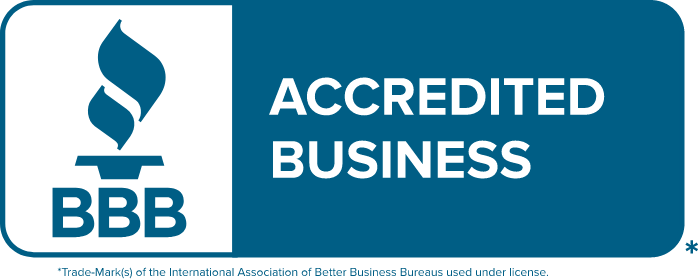Content marketing is a very effective strategy for promoting your brand in other ways. With this article, our goal is to help you understand all the tricks of this technique so that you too can embark on the adventure of web writing.
What is Content Marketing Term in Content Writing?
Content marketing is a very effective digital marketing strategy. Its main goal is to succeed in attracting and retaining your target audience by creating and distributing quality content, which answers the various questions it is asking. The idea, in fact, is to offer useful and free content (blog articles, e-books) to gain notoriety and credibility and thus manage to convert those who read you.
It allows you to attract traffic to your site, generate prospects, convert them into customers, and become a reference in your sector of activity. All this, without ever having to pass a campaign advertising.
A technique of “pull marketing” and not of “push marketing”
The marketing push is a company active approach which consists in creating a promotional message that is pushed to the consumer, mainly shot commercials. The advantage is that you are visible to your target audience whenever you want (during a big promotion, for example). On the other hand, you are not necessarily doing it when your prospect needs it.
The whole point of pull marketing is therefore that it is not a question of pushing your message towards the prospect but rather of pulling the latter towards you. This technique consists of letting the Internet user come to you by suggesting content that answers their questions. He is therefore in an active research process and gets the information well when it is useful to him. You, therefore, reach qualified traffic, which is more advanced in the conversion funnel and therefore more likely to be converted.
The use of internal resources
Content marketing is also financially beneficial. Compared to the higher prices of traditional marketing, which mainly involves advertising, content marketing offers a real opportunity to lower these costs, which nevertheless represent a certain investment. You have, indeed, the possibility of using internal resources to write blog articles or e-books yourself, even if it takes the time and specific knowledge.
Content marketing contributes to the natural referencing (SEO) of your site
This is in fact the primary objective of marketing content: improving your natural referencing and therefore your ranking in search engines. By multiplying blog articles of a certain length and quality, which deal with subjects useful to your sector but which you do not deal directly on your site, you multiply the doors of entry. This is why, in order to attract your prospects via the content that you write, they must be written in such a way as to be optimized for SEO. You will gain visibility and increase your qualified traffic.
The big steps in creating SEO content
At Cybexo, we distinguish three main steps essential for writing quality SEO-oriented text: the selection of keywords, writing and technical optimization.
1st step: Choose SEO Optimized Keyword for Content
The first big step in creating effective content is choosing the right keywords. To do this, you must first know your target audience. Ask yourself what words people type in Google when they search for you, specifically you or your industry in general. Or what are the common questions they ask about you. In other words, put yourself in their place. The more you understand their behavior on the Web, the easier it will be to attract them to your site.
The answers to all these questions will allow you to get a first idea of the keywords that are important for your business. The next step is to cross-check them with data on the volume of research and the competition. The notion of search volume will allow you to prioritize the keywords searched by importance. That of competition will give you an indication of the level of difficulty encountered to position yourself on this keyword.
By combining all of this information, you will be able to make a careful and informed selection of the keywords that are important to you. So the most interesting keywords are those that combine a good search volume and a level of difficulty not too high.
To help you find all this data, there are different tools. Some, free, allow you to discover the keywords and questions associated with the keywords that you think are interesting. Others, paid, allow you to analyze more precisely the keywords by cross-referencing the famous data of search volume and difficulty. This is particularly the case for Moz .
2nd step: Write Your SEO Optimized Content
Once the keywords have been selected, there comes the writing stage itself. First tip to know for each page of your site or each article of your blog, you must write on a single keyword (including its variants, of course).
The next step is to write a text that combines:
- Quality content , with real added value for the reader
- SEO-optimized content writing
The two do not go without each other. Your content can be the most interesting in the world, if it is poorly referenced, it will not be read. On the contrary, if your text is well referenced but it brings no added value, it will very quickly be avoided by readers.
How to write quality content for your website or corporate blog?
Simply by ensuring that you always answer the questions posed by your page/article. For example, let’s say you are a travel agency and want to write a blog post about “The pros and cons of group travel”. Such a title suggests that the text-only focuses on group travel and that it does take the time to list a number of pros and cons. If this is not the case, the reader may feel aggrieved and leave your website very quickly. Take care to answer the basic question of your text and, of course, to give a correct answer.
How to write SEO optimized content?
When writing your content, various points must imperatively be taken into account.
- You must enter your keywords in your text, in a PARSIMONIOUS manner. There is no point in bludgeoning the reader. On the contrary, Google sanctions these behaviors and favors more subtle websites and blogs. So it’s not the quantity that counts, but the quality. You must drag your keywords to the right places: title and subtitles, first paragraph, and at regular intervals in your content.
- Speaking of title and subtitles, be sure to structure your writing with H1, H2, H3, etc. There are many benefits to everyone. It helps you structure your thinking. Google can more easily understand the subject of your page/article and therefore better reference it. Your reader is not confronted with a large block of text and already has a general idea of the points covered.
- Also, avoid what is known in professional parlance as duplicate content. In other words, do not reuse the same text several times on different pages of your website and do not plagiarize competitors by copying and pasting their articles/pages. Google, indeed, sanctions these behaviors.
3rd step: Technically Optimize Your Pages SEO
Finally, there are different little tips to further optimize the SEO of your article / page.
- Write the meta-title and meta-description of your page/article yourself and enter your keywords. This is the title and description that will appear on the search engine results page. They must, therefore, be engaging to encourage clicks but also SEO oriented to be even more efficient.
- If your CMS allows it (as it is the case for WordPress, for example), modify the URLs of your pages and your articles by entering the corresponding keyword. Be careful, however, not to forget any 301 redirects if your text is already online.
- Also, add internal (to other pages/articles on your site) and external (to other sites) links in your text. The technique of links is well known to optimize your SEO. Please note that, from now on, it is no longer a question of adding links in all directions to be well referenced. You must favor quality links, that is to say, links to sites whose authority is recognized and which deals with the same subject as you.
Some Additional Tips for Writing for the Web
Structure your text according to the inverted pyramid principle
Usually, when you write a text, you keep the important information for the end, just to end in apotheosis. This is not the case in web copywriting. On the contrary, the main information should be at the very beginning of your text (ideally in the title or the first sentence, even the first paragraph). Then only comes the additional information.
Highlight important information in your text
Do not hesitate to use all the techniques at your disposal to highlight the important information of your content:
- The fat
- Italics
- The boxes
- Quotes from the text
- Bulleted lists
- etc.
Once again, this is to help the reader during his overview phase, so that he can quickly see the interesting points of your text. This increases the chances that he will read you more carefully.
Insert hyperlinks
One of the great advantages of the Internet is hyperlinks. They facilitate navigation between different web pages. Consider including them in your texts to encourage people to go to other pages of your website or other articles of your blog. If your content is interesting, they will click on it more easily.
Speak to your reader
It is very important to speak directly to the Internet user and to use the pronoun “you”. Thus, your reader will feel more concerned with what you are saying and will react much more positively to your text than if you were speaking in general.
Use the principles of journalistic writing
From the point of view of writing as such, favor the principles of journalistic writing, namely:
- Short, simple sentences
- Follow the order as much as possible: subject-verb-complements
- Use mainly the active form, rather than the passive form
- Avoid the abuse of qualifying adjectives or adverbs
- Avoid negative formulations (don’t, not, etc.)
I hope you have got some concept about content writing importance and get clarity, about how to write an optimized content. Please feel free to ask any questions. Stay happy!


